Da Lat Flower Festival 2012 was held from December 30, 2011 to January 3, 2012. On the occasion of the event, the Prime Minister issued a decision to officially recognized Da Lat as “The Flower Festival City of Vietnam”. It also meant that the Da Lat flower trademark had been increasingly honoured and affirmed.
From the traditional floriculture
Those who visit Da Lat will never forget the image of a romantic city with pine trees and beautiful flowers in different colours.
Situated at an altitude of 1,500m above sea level and surrounded by high mountains, Da Lat has a temperate climate with cool weather all year round, which is very suitable for growing vegetables and flowers throughout the four seasons.
The floriculture in Da Lat started in 1938 when people from the flower-growing villages of Nghi Tam and Quang Ba in Hanoi emigrated here. Realising that this area had fresh air and fertile land, they established Ha Dong Village and specialized in growing vegetables and gladiolus. Their farming methods at that time were rather simple. They cultivated the seedlings and used manure from wild sunflower trees which were abundant in Da Lat’s mountains and hills, to fertilize the farm land. Over time, the floriculture expanded to the villages of Truong Son, Tram Hanh, Xuan Thanh, Thai Phien and Van Thanh. Later, it spread to the streets of Ho Xuan Huong, Van Kiep, Nguyen Tu Luc and Mimosa.

Thai Phien Village in Da Lat is well-known for its floriculture.
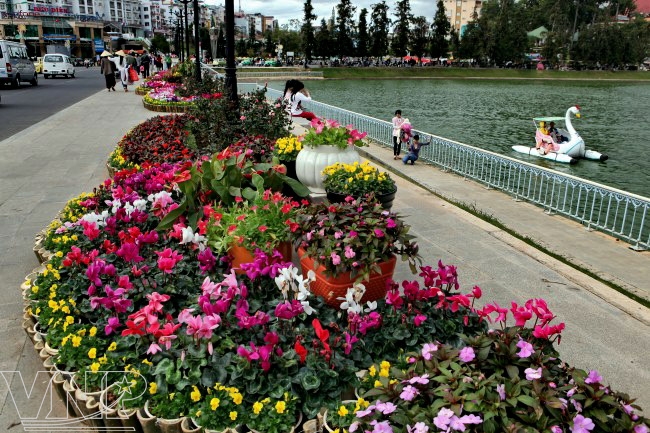
The streets in Da Lat are brilliant with colourful flowers
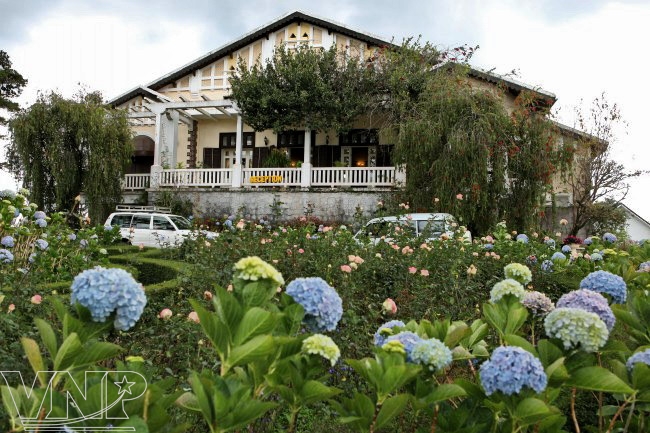
Da Lat has many romantic villas surrounded by beautiful gardens.
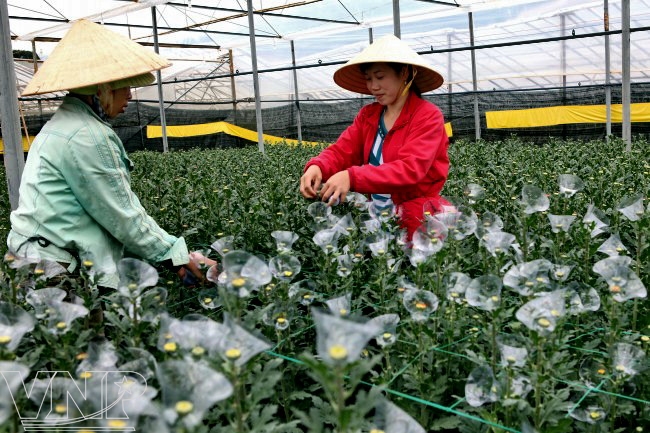
Growing flowers in net houses.
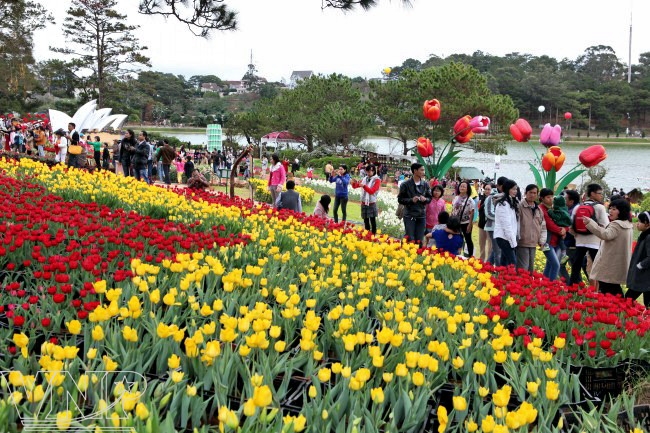
Beautiful tulip gardens on the bank of Xuan Huong Lake in Da Lat.
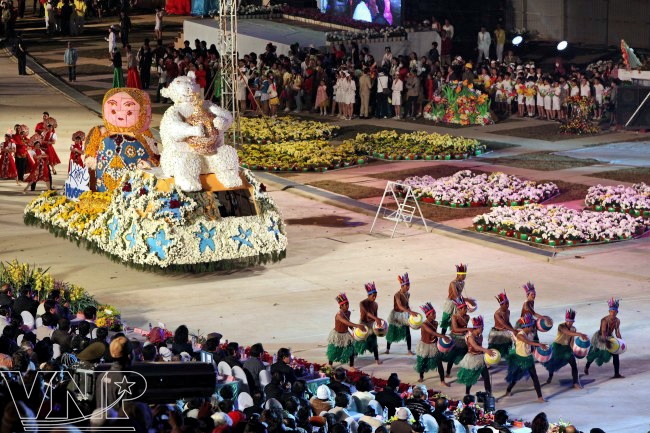
A parade of flower floats at the Dat Lat Flower Festival 2012.
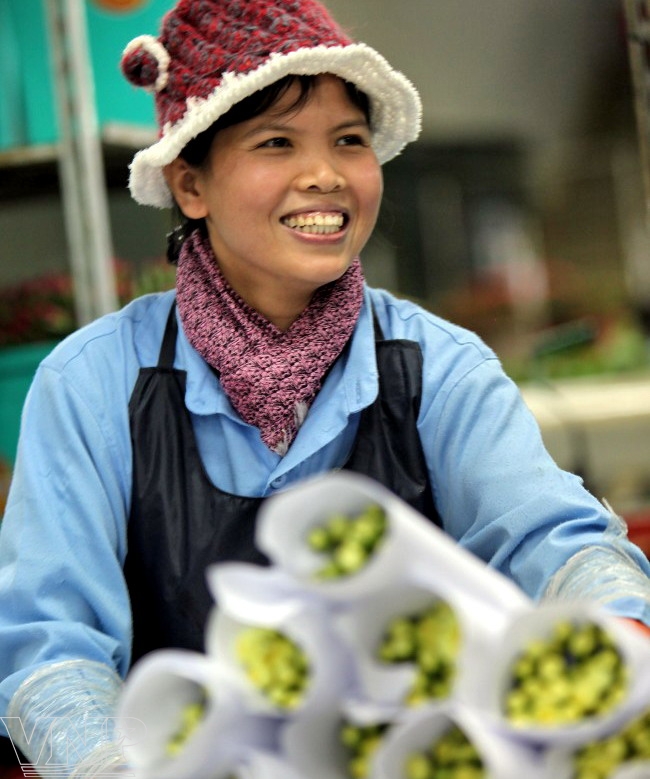
Joy of a floriculturist in Da Lat. |
However, it was not until the 1990s that the names of Da Lat flowers became known in Van Thanh Village which was the main grower and supplier of roses in Da Lat. In December 2009, Thai Phien Village became the first flower-growing village to be recognized by Lam Dong Provincial People’s Committee as a traditional craft village with well-known flowers, such as the Allamanda cathartica, margarites, gerberas, red chrysanthemums, hydrangeas and roses.
| In 2011, the flower cultivation acreage of Lam Dong Province, mainly in Da Lat, reached 3,862ha with an output of about 1.4 billion flowers in which 52 million flowers were exported, earning 22 million USD. In addition to the traditional markets, such as Singapore, China and Japan, Da Lat’s well-known flowers, such as roses, lys, orchids and daisies have also been exported to the European and North American markets. |
In 1995, the floriculture in Da Lat really bloomed with the appearance of Dalat Hasfarm, an “industrial flower village” with 100% foreign capital. With an initial area of two hectares, this village produced many categories of flowers with brilliant colours. The establishment of the Dalat Hasfarm has completely changed the traditional ways of growing flowers by the local people. By using lamps to warm the flowers, Dalat Hasfarm has successfully grown many varieties of chrysanthemums and made them bloom during Tet (lunar New Year) to sell to the markets with a higher price. This way of farming has stimulated the Thai Phien, Tram Hanh and Da Thien villagers to use modern methods.
We visited Thai Phien Village, Da Lat before the Da Lat Flower Festival 2012 was held. The floriculturists had cut most of the flowers and were preparing for a new harvest to sell on the occasion of Tet. We went to a peaceful, rustic space of flowers where we could see the link between the villagers and the floriculture.
Nguyen Van Phong, a 16-year-old boy, said: “My family has 3,000m2 of greenhouse to grow flowers. Besides helping my family, I also help other people in the village care for and harvest flowers for the festival.” At present, over 90% of the households in Thai Phien are engaged in floriculture and earn an average annual income of over 500 million VND/ha. Thai Phien flowers are sold nationwide and have been exported with about 5% of output.
To the development of the brand
Since technical advances were applied to production in 1995, the floriculture in Da Lat has made big strides. Now the city has a bank of hundreds of domestic and foreign flower species and over 35 laboratories to apply tissue-cultivation technology to develop the disease-free flower varieties. The enterprises, farms, co-operatives and households have applied advanced technology to flower production, such as greenhouses, net houses, drip irrigation and growing the flowers from seedlings which are produced with the new technology.
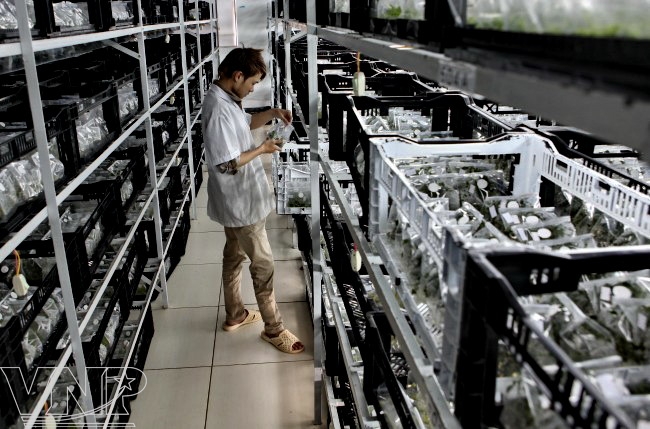
A lighting system for seedlings cultivation at the Da Lat Flower - Forest Biotechnology Corporation.

The tissue-cultivation lab of the Da Lat Flower - Forest Biotechnology Corporation.
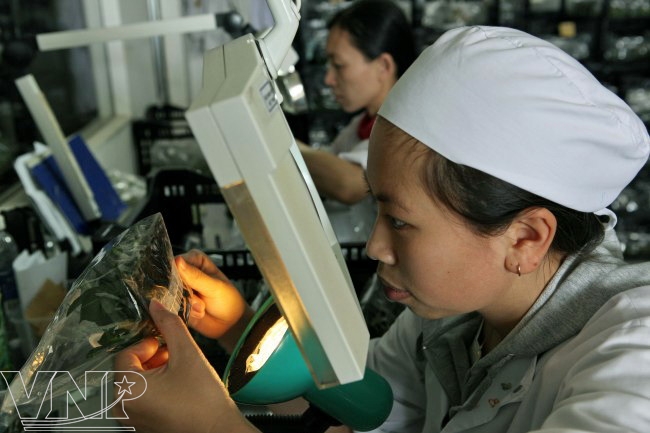
Checking the growth of the roots of flower plants.
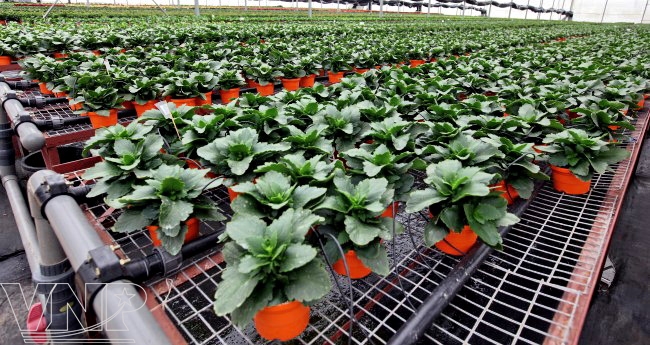
Drip irrigation technology is used in many seedling-cultivation gardens.
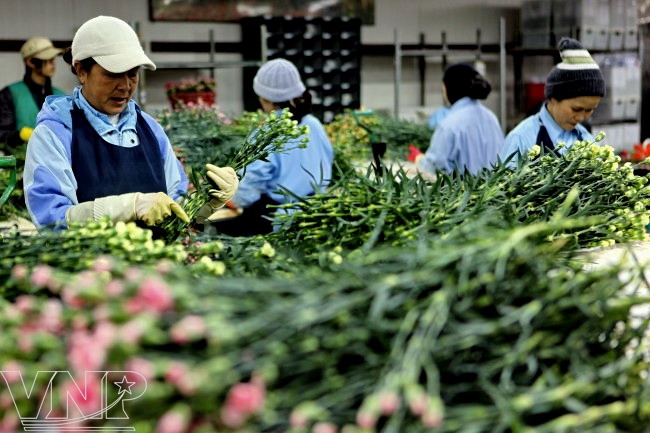
Checking the quality of carnations before selling.
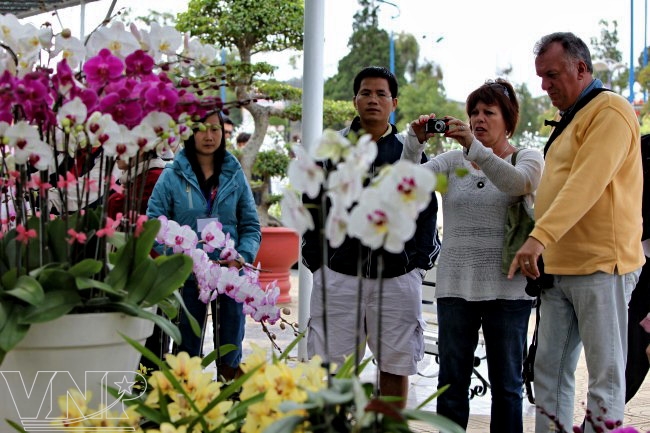
Visitors enjoy the beauty of the paraphalaenopsis. |
The flower-growing areas have also boosted co-operation with centres, research institutes and universities to learn and transfer technology and train the human resources to develop the floriculture. The local authorities also encourage the flower-growing households to co-operate with each other and with enterprises and associations to promote their production, increase sales and expand the market. Thanks to this, Da Lat high-grade flowers are more and more diverse in variety, meeting the domestic demands and for export.
The showroom of the Da Lat Flower - Forest Biotechnology Corporation at 7A/1, Mai Anh Dao Street, has been recognized as the biggest flower showroom in Vietnam. In a space full of flowers with diverse colours, hundreds of visitors at home and abroad cannot help admiring the beauty of many pots of flowers which are arranged in various styles and preserved with Japanese technology that can keep the flowers fresh for 3-5 years.
Director of the company Nguyen Dinh Son said that the company was the first business in Southeast Asia to apply the method of producing the seedlings using tissue cultivation technology on an industrial scale. It has built a laboratory of 2,000m2 with modern equipment which annually yields 12 million seedlings of various varieties of flowers, such as lys, gerberas, salems, bibis, Asystasia chelonoides, daisies, hydrangeas and Ylang ylang, and over 300 species of ornamental plants. The company exported one million seedlings to Belgium in 2006 and four million in 2008. In 2010 it exported seven million seedlings to New Zealand, the Netherlands, Belgium and China.
Now, Da Lat has 400 species of flowers with thousands of varieties at home or from Asia (China, Japan, India and Thailand), Europe (France, the Netherlands) and America, and 200 sets of newly acclimatized varieties from other countries. From these varieties the farmers and enterprises have produced commercial flowers using high technology. As a result, the quality of Da Lat flowers is similar to those of the countries with an age-old floriculture, such as France, the Netherlands and Bulgaria.
Besides developing the floriculture, Da Lat also promotes the brand of its flowers. Every two years, the city organizes a flower festival. At the Da Lat Flower Festival 2012, the organizers carried out many programmes to introduce and exhibit the flowers with different themes, such as the flower space, flower tourism, Da Lat flower market, street flower parade titled “Flowers and light”, and Romance Palace flower road. There were contests to learn about the flowers, seminars on flowers and many programmes of investment promotion.
On the occasion of the Da Lat Flower Festival 2012, the Prime Minister issued a decision to officially recognize Da Lat as the “Flower Festival City of Vietnam”. Previously, on December 26, 2011 the Department of Intellectual Property issued a certificate for the brand of Da Lat flowers with the owner being Da Lat City People’s Committee. Thus, Da Lat flower brand has been recognized and honoured. This is not only the pride of the city residents, but it also requires the local authorities and people to have activities to protect and develop this brand, with the aim of making flower production become a strong point in promoting the tourism and socio-economic development of the city.
Story: Nguyen Vu Thanh Dat - Photos: Le Minh